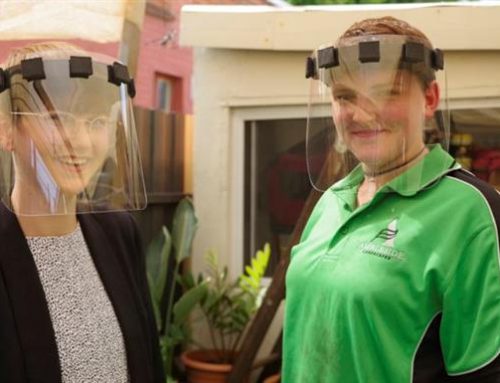
Now that we have comfortably settled into the world of high definition video with readily available, reasonably priced 1080p displays and a variety of content options, be prepared for the latest and greatest video innovation. Television sales have been impacted by the latest economic downturn so the manufacturers are looking for the next incremental improvement in the home viewing experience to rekindle consumer interest. How about 3D video capability from the comfort of your couch? Based on the numerous 3D video displays shown at the 2009 CES, a number of big players are making a serious attempt to finally bring 3D movies home by making them technologically cost effective and user friendly. Look at Hollywood and the gaming industry to be the key players in determining the success of this latest kick at the can.
3D display technology has been around for longer than you may think. Static display stereoscopic imaging was patented way back in 1900. In 1915 the first red/green anaglyph film was tested on audiences and there was a flurry of 3D films in the early 1920s, mid 30s and 50s. However moving images have always been problematic as filming required the use of two perfectly synchronized lenses or cameras. Comfortable viewing of the finished product has been the bane of 3D’s existence because it requires the use of some type of 3D glasses. The fact that pretty well all 3D films were cheesy and had gimmicky effects didn’t help and caused 3D to fade by the mid 1950s.
Today a small number of 3D movies are available on DVD and Blu-ray disc. These are movies that were originally shown in 3D theatres and required polarized glasses to view. 3D theatres use two synchronized projectors which project two respective views onto the screen, each with a different polarization. Each eye piece of the glasses contains a lens with a different polarization and allows only one of the images into each eye. Our brains combine the two images, creating a very effective 3D picture. Another method of achieving the 3D effect is by using LCD shutter glasses, which are controlled by the display. The shutters in front of the left eye open when the display shows the image intended for the left eye, and close when the display shows the image intended for the right eye. This process is reversed for the next frame and hence creates the 3D effect.
However, currently the most common way to experience these movies in 3D at home is to transfer them to a format that works with anaglyph glasses which have two colour filters (red/cyan, green/magenta or amber/blue). Using this system, two slightly offset images of different colours are displayed on the screen at the same time. The colour filters in the glasses allow only one image to pass to each eye. Unfortunately anaglyph glasses have two major disadvantages compared to polarized (or LCD shutter) glasses: limited colour reproduction and picture ghosting. Hence the 3D effect on a home television isn’t nearly of the same quality as it was in the 3D movie theatres and comes at a major sacrifice of picture quality.
But recent advancements in digital technology have enabled TV manufacturers and Hollywood to make the most promising effort yet to bring 3D video into our homes. IMAX of Toronto has been producing feature-length 3D films since the early 1980s and its on-going technological achievements have been instrumental in the current resurgence of 3D productions from the major movie studios. Let’s take a look at how the 3D movie experience can be transported from the theatre to your home.
Currently available 3D displays utilize the DLP (rear-projection), plasma and LCD technologies and cost virtually the same as comparable standard HDTVs. Visually, there are few or no cosmetic changes between standard HDTVs and 3D display. The fixed pixel nature of these display technologies allow for precise off-shifting of the two images which is necessary for depth of field. Unfortunately this is where the commonalities end as there is no standard method for getting the finished 3D content to the home viewer. At present, different storage and playback modalities exist as well as technology that either requires glasses (passive polarized or active LCD shutter) or no glasses. Philips and Panasonic appear to be the major proponents of the 3D push. Panasonic has even gone as far as to submit a proposed 3D standard to other manufacturers in the hope of establishing a united rollout effort without a format war. The Blu-ray Disc Association (BDA) has been pondering proposals from the technology industry for a Blu-ray 3D standard for some time now. But at the time of this writing, a decision had still not been made.
Presently, 3D capable displays are available from Samsung, Mitsubishi and Philips. The initial releases are predominantly DLP-based which is interesting in that DLP has appeared to fall by the wayside over the last couple of years after much promise as a home theatre HDTV option. The speed of the micro mirrors in DLP devices has appeared to spur a revival of the technology if only for 3D applications. The focus on the current units has been for the gaming community as 3D movies are only now becoming part of Hollywood’s go forward agenda. Current 3D capable DLP rear projection displays all require 3D glasses and a plug-in module that triggers the shutter based glasses. More recently, 3D TVs in the plasma and LCD flavours have also been introduced.
In the US, Samsung offers 3D-ready DLP (1080p) and plasma (720p) TVs, from 42 inches up. To unlock the 3D capability of these sets, a separate 3D kit which includes software and 3D glasses must be purchased. The software has to be installed on a PC and allows any standard DVD to be viewed in 3D, using the PC’s drive as the source. The kit also works with over 350 Microsoft DirectX 3D PC games available today. Two new 50-inch 1080p models capable of converting Blu-ray and broadcast HD to 3D are pending release.
Also in the US, Mitsubishi offers DLP-based and Laser TV 3D-ready TVs ranging from 60 to 73 inches. As with the Samsung sets, these TVs require you to purchase 3D glasses separately and use a PC as the source. These TVs are also compatible with DirectX 3D games.
Philips has created a lot of buzz with the Quad HD 3D TV LCD-based system using its own WoWvx technology to replace the previous DLP system. The new technology does not require glasses and increases the pixel count to a whopping resolution of 3840 by 2160. The auto-stereoscopic (read “no 3D glasses required”) displays use 3 pixels oriented cylindrically directing the 3 images in a side by side fashion for the same screen area that a single pixel used to occupy, creating the illusion of 3D. The technology is expensive and is currently available for commercial billboard-style displays, with a 42-inch model costing $12,000 and the 52-inch model costing $25,000. As with any non-glasses 3D display, the units are compromised for traditional 2D HD so the importance of the WoWvx technology to be able to up-convert all HD content to 3D is critical to Phillip’s success on this front. At the end of 2008, Philips also revealed a 56-inch model at the Biz-Ex conference in Hollywood. Toshiba and Sanyo are both working on a similar stereoscopic system.
At the 2009 CES, Panasonic demonstrated a modified Blu-ray player feeding a 103-inch 3D-capable plasma that offered full 1080p resolution to both eyes using glasses with an LCD shutter system. In contrast, all other glasses-based 3D systems reduce the source resolution by half, feeding only 50 percent of the resolution to each eye. I experienced the LCD shutter style glasses at the IMAX 3D Theater in Orlando back in 1999 and even at that early stage of development they were highly effective, although the glasses were bulky. But a couple of years ago I had a chance to test a 3D system from Canadian company Sensio which utilized the more recent incarnation of the LCD shutter glasses, looking much like a pair of Oakley sunglasses, and again the results were non fatiguing and immersive. Keisuke Suetsugi, a manager for the audio visual center at Panasonic suggests that the only approach to 3D for now is using glasses. He states that to achieve similar results from a plasma 3D system without glasses would require 50 times the available pixels which, he says, is about 10 years away from reality. Panasonic says that its 3D system will be market ready for late 2009.
Other companies that showed off 3D capable displays at the 2009 CES included LG Electronics, Sony, Soyo/Honeywell, TCL/RCA, Toshiba and Samsung. All of these manufacturers had plasma and LCD displays with modified or existing Blu-ray players and HD broadcast as the sources. The Soyo LCD unit is claiming to be the first North American 3D HDTV that is capable of both 2D and 3D presentations, converting 2D to 3D viewing using passive polarized glasses. TCL/RCA offered a 3D display that uses a lenticular screen and no glasses but will only work for 3D sources and is not suitable for 2D HD viewing. LG had both plasma and LCD solutions but no firm release dates. Sony is working on LCD 3D displays. Philips, Toshiba, 3M and Mitsubishi are all looking at a 3D solution that requires no glasses. 3M’s solution involves thin film technology that directs light to each eye. Keep a close eye for future news releases from all these companies.
So we have a number of hardware options currently available and many more coming to market this year and early 2010. So what will we be playing on these new TVs?
At the time of this writing, there were 13 scheduled Hollywood 3D releases for 2009, including several long anticipated projects, like James Cameron’s long awaited science fiction film “Avatar” to be released late this year. “Avatar” may well pave the way for more, big budget 3D productions. Pixar and DreamWorks have both announced that starting in 2009 all their future releases will be produced in 3D! The first 3D feature from DreamWorks this year will be “Monsters vs. Aliens”, which is playing at the movie theatres just as this issue is hitting the shelves. Sports leagues have also recently been experimenting with 3D technology by broadcasting games in 3D movie theatres. All these pending releases are to be theatrically displayed in 3D wherever there are 3D equipped theatres. It’s a safe guess that these films will later be released on the DVD and Blu-ray formats with some form of 3D encoding. Look for IMAX to not only provide content but also the technology to bring more 3D software into our homes. Even George Lucas confirmed that he has plans to re-release all six episodes of Star Wars in 3D using converting technology from In-Three! Computer animated content is currently the easiest to produce in 3D and will likely continue to be the dominant genre for the next couple of years. But as technology evolves we are bound to see both new live action releases and older films converted to 3D.
The TV video gaming world is on the verge of breaking the 2D barrier. Sony has plans to bring a 3D version of the PlayStation 3 to market with supporting software. A company called Next3D aims to bring 3D entertainment home quickly to your Xbox 360 or PC, if you already own a 3D ready TV, like one of the sets mentioned above. The promised content includes theatrical 3D films, 3D IMAX films, sporting events and movie trailers. The Next3D Player is expected to be available for Xbox 360 and PCs this spring. Samsung and EA have formed a partnership to develop 3D gaming. Graphics card manufacturer Nvidia, a company that has been at the forefront of 3D computer gaming, had a working 3D gaming display at 2009 CES that seemed to wow the participants with its adjustable depth of vision.
There is no question that realistic 3D could be the next evolutionary step for the home theatre. Let’s hope that 2009 will be the year that home 3D finally breaks through! One thing is for sure, we’ll keep you posted on the latest developments.
Update (February 11, 2010):
3D HDTVs should slowly start making their way into consumer homes as early as the spring of 2010. Although most manufacturers didn’t release pricing information, most said that 3D HDTVs should be available for a small premium compared to traditional TVs. Panasonic should be the first out of the gate with its VT25 series of plasma TVs, which will be the successor to the company’s high-end PV10 series. Two sizes of this TV will be available – a 50-inch and a 54-inch. Each set will include one pair of 3D glasses. Panasonic calls its system “Full HD 3D” since each eye will get the full 1080p resolution. Panasonic will also release a 3D Blu-ray player which will be required to play 3D movies. Samsung’s 3D television line-up includes the LCD LED-backlit series LED 9000, LED 8000 and LED 7000 as well as standard LCD and plasma televisions. Samsung will also be introducing a 3D Blu-ray player, the BD-C6900. LG’s LE9500 series (also called INFINIA) will introduce 47 and 55 inch 3D HDTV models. Not to be outdone, Toshiba will also be releasing the ZX900 series of high-end LCD LED-backlit 3d TVs, expected to start shipping in September of 2010. What’s surprising is that all the TVs in this series will have the Cell processor, which first appeared in the PlayStation 3, built-in. Toshiba says that this chip will enable its TVs to convert any 2D content to 3D. How well will this work? We’ll just have to wait and see. Vizio’s 47 inch XVT Pro 470SV 3D 1080p will be available this summer for $1,999 USD MSRP, a slight premium over comparable 47 inch 2D HDTVs but also coming with features such as built-in virtual surround sound.
As with many new technologies, it is arguably the content that pushes adoption. What good was your 1080p HDTV when all you were watching were upscaled DVDs? Fortunately, two announcements by two separate studios help solve the chicken/egg dilemma. First, ESPN has announced that it will start broadcasting 3D sports, starting with FIFA World Cup action in June 2010. Regular American football will follow shortly after. Second, Sony is teaming up with IMAX (a Canadian invention) and Discovery Communications, owner of channels such as Discovery Channel (Shark Week in 3D!), TLC, Animal Planet, and the Oprah Winfrey Network to bring a 24-hour dedicated 3D network in 2011.
The Blu-ray Disc Association has also finalized the Blu-ray 3D standard ensuring consumers will have a single accessible format. Sony’s first 3D home release will be “Cloudy with a Chance of Meatballs” in Q2. Disney will begin releasing 3D titles in Q4 of 2010. As with many new formats, the 3D Blu-ray standard introduces some new issues. The first issue is more technical and content-oriented: the 3D standard only supports 24 frames per second which limits high-speed cinematography (losing the extra frames of films shot in higher frame rates such as nature films). The second is similar to the introduction of Blu-ray and the subsequent obsolescence of DVD players: 3D Blu-ray discs are not required to be backwards compatible with 2D Blu-ray players (even if they have a 2D version of the film on the disc simultaneously). This should be less of an issue since a 3D-capable Blu-ray player will be required to view the 3D discs (and will support playing 2D discs). On a positive note, existing PlayStation 3s will be firmware upgradeable to support Blu-ray 3D. Similarly, existing Mitsubishi laser projection HDTVs are already 3D-capable and only require Mitsubishi’s yet-to-be-priced-but-apparently-“affordable” 3DC-1000 adapter to convert 3D material into a compatible format for processing by the display.
For up to date news and discussions about 3D HDTVs and players visit the CANADA HiFi forum at http://novo.press/forum
16 Comments
Leave A Comment
You must be logged in to post a comment.






… [Trackback]
[…] Information on that Topic: novo.press/3d-television-finally-coming-to-your-home-television/ […]
… [Trackback]
[…] Info on that Topic: novo.press/3d-television-finally-coming-to-your-home-television/ […]
… [Trackback]
[…] Here you can find 28163 more Information to that Topic: novo.press/3d-television-finally-coming-to-your-home-television/ […]
… [Trackback]
[…] Find More Information here to that Topic: novo.press/3d-television-finally-coming-to-your-home-television/ […]
… [Trackback]
[…] Read More Information here to that Topic: novo.press/3d-television-finally-coming-to-your-home-television/ […]
… [Trackback]
[…] Read More Info here on that Topic: novo.press/3d-television-finally-coming-to-your-home-television/ […]
… [Trackback]
[…] Find More Info here on that Topic: novo.press/3d-television-finally-coming-to-your-home-television/ […]
… [Trackback]
[…] Find More on to that Topic: novo.press/3d-television-finally-coming-to-your-home-television/ […]
… [Trackback]
[…] Find More here to that Topic: novo.press/3d-television-finally-coming-to-your-home-television/ […]
… [Trackback]
[…] Read More Information here on that Topic: novo.press/3d-television-finally-coming-to-your-home-television/ […]
… [Trackback]
[…] Information to that Topic: novo.press/3d-television-finally-coming-to-your-home-television/ […]
… [Trackback]
[…] Information to that Topic: novo.press/3d-television-finally-coming-to-your-home-television/ […]
… [Trackback]
[…] Info to that Topic: novo.press/3d-television-finally-coming-to-your-home-television/ […]
… [Trackback]
[…] Read More here on that Topic: novo.press/3d-television-finally-coming-to-your-home-television/ […]
… [Trackback]
[…] Read More to that Topic: novo.press/3d-television-finally-coming-to-your-home-television/ […]
… [Trackback]
[…] Find More Information here to that Topic: novo.press/3d-television-finally-coming-to-your-home-television/ […]